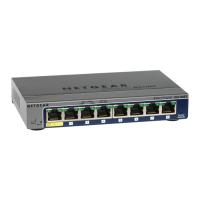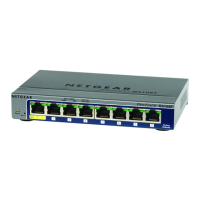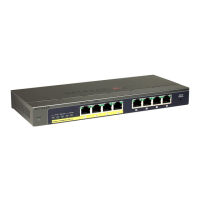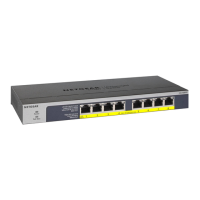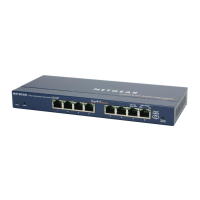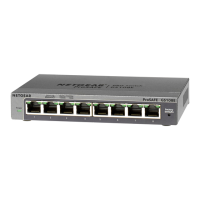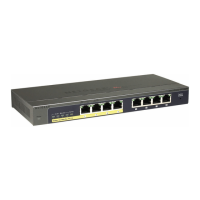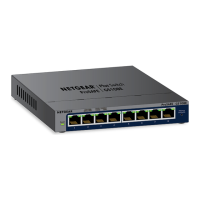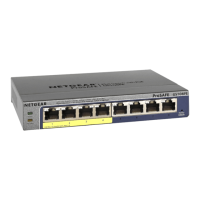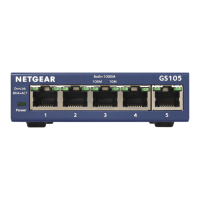8-Port Gigabit (PoE+) Ethernet Smart Managed Pro Switch with (2 SFP or 2 Copper Ports and)
Cloud Management
Manage Device Security User Manual397
• The source IP UDP port protocols are domain, echo, snmp, ntp, rip, time,
who, and tftp.
Each of these values translates into its equivalent port number, which is used as
both the start and end of the port range.
Select Other from the menu to enter a port number. If you select Other from the
menu but leave the field blank, it means any.
The only relevant matching condition for L4 port numbers is Equal. This means
that an IPv6 ACL rule matches only if the Layer 4 source port number is equal to
the specified port number or port protocol.
- Range. If you select the Range radio button, the IPv6 ACL rule matches only if
the Layer
4 source port number is within the specified port range. The starting
port, ending port, and all ports in between are a part of the Layer 4 port range.
The Start Port and End Port fields identify the first and last ports that are part of
the port range. They values can range from 0 to 65535.
You can either enter the port range yourself or select one of the following
protocols from the menu:
• The source IP TCP port protocols are domain, echo, ftp, ftpdata, www-http,
smtp, telnet, pop2, pop3, and bgp.
• The source IP UDP port protocols are domain, echo, snmp, ntp, rip, time,
who, and tftp.
Each of these values translates into its equivalent port number, which is used as
both the start and end of the port range.
Select Other from the menu to enter port numbers. If you select Other from the
menu but leave the fields blank, it means any.
• Dst. In the Dst field, enter a destination IPv6 address to be compared to a packet’s
destination IPv6 address as a match criterion for the selected IPv6 ACL rule:
- If you select the IPv6 Address radio button, enter an IPv6 address to apply this
criteria. If this field is left empty, it means any.
- If you select the Host radio button, enter a host source IPv6 address to match the
specified IPv6 address. If this field is left empty, it means any.
The source IPv6 address argument must be in the form documented in RFC 2373
where the address is specified in hexadecimal numbers using 16-bit values between
colons.
• Dst L4. The options are available only when the protocol is set to TCP or UDP. Use the
destination L4 port option to specify relevant matching conditions for L4 port numbers
in the extended ACL rule.
You can select either the Port radio button or the Range radio button:
- Port. If you select the Port radio button, you can either enter the port number
yourself or select one of the following protocols from the menu:
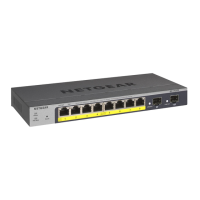
